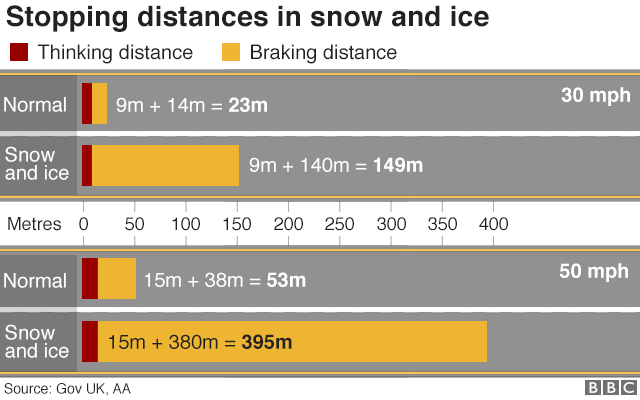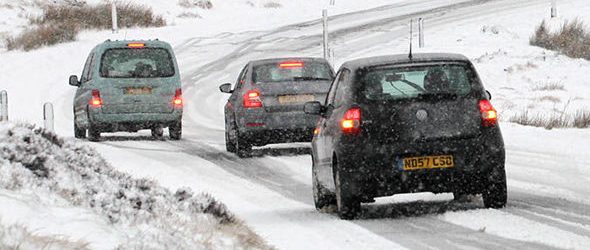As the temperatures plummet, there’s an increasing chance of snow and ice bringing extra driving challenges. Last week we told you how to prepare you and your car for snow and ice. This week we’re going to offer you advice on driving in snowy and icy conditions.
Setting off
Before setting off, the first thing you need to do is clear all snow and ice from your windscreen, windows and the roof of your car. It’s not advisable to use hot water to clear your car’s windscreen as this can crack the glass. Hopefully you’ve allowed yourself plenty of extra time for your journey, so some of this time should be spent making your car safe to drive in wintry conditions.
When pulling away, use second gear and lift the clutch gently in order to avoid spinning the wheels. As you pick up speed, stay in a higher gear to gain traction and therefore have better control. If your car is automatic, enable ‘snow mode’ or use the ‘manual 2’ mode when setting off.
Ensure that you maintain the right speed for the conditions. You don’t want to go too fast that you can’t control the car fully or stop if there’s an obstacle ahead. But at the same time if you go too slowly you will lose momentum when you may really need it. When driving in snow and ice, brake, steer and accelerate as smoothly as possible. You should only brake if you’re unable to steer out of trouble, as stopping distances can be up to 10 times greater in snow and ice. This means that you need to leave a much larger gap between yourself and the car in front.

If you have a four wheel drive vehicle then it does not mean that you don’t need to follow this advice. Four wheel drive vehicles offer better traction for pulling away and moving, but braking still poses the same risks. Cars with ABS will not brake in the same way on very slippery conditions, so be aware of this. When driving on motorways, drive in the clearest lane and keep within the tyre tracks if possible.
What to do if you get Stuck
When stuck in heavy snow, some good advice is to turn your wheels from side to side in order to push the snow out of the way. If your wheels spin, then don’t keep trying to move as this will just dig you deeper into the snow. Use a shovel to clear snow out of the way and pour car litter, sand or gravel in front of the wheels to help gain traction.
Shift from second gear to reverse and then back again, touching the accelerator lightly in order to get going again.
If you’re well and truly stuck and cannot get the car moving, keep the engine running in order to stay warm. However, make sure that the exhaust pipe is not blocked by snow to prevent carbon monoxide from entering the car. It’s always a good idea to run your engine for no longer than 10 to 15 minutes of every hour when stuck in the snow.
Stay in or within close proximity of your car, and hang a piece of brightly coloured cloth on your car to let others know that you are there.

Take extra heed in snow and ice